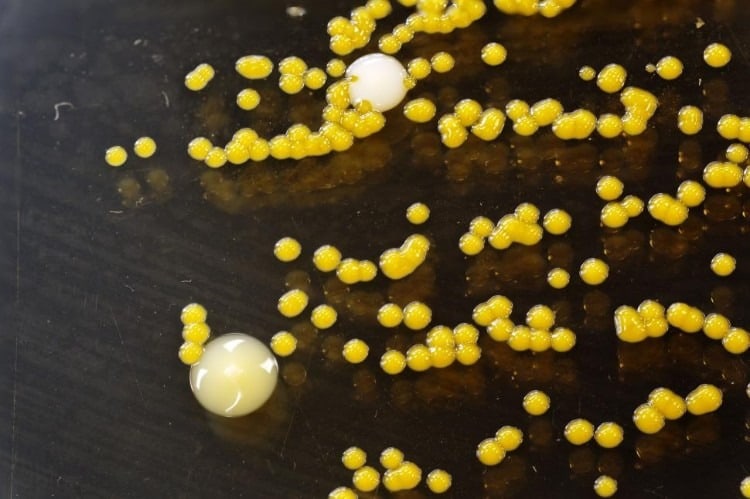



Revolutionized is reader-supported. When you buy through links on our site, we may earn an affiliate commision. Learn more here.
Turkey and stuffing and gravy, oh my! Green bean casserole, mashed potatoes, fluffy biscuits and pumpkin pie are the ultimate comfort foods during the holidays. While you’re preparing to stuff yourself for Thanksgiving, don’t forget the science! Start a new tradition by including these five fun Thanksgiving break science experiments after your big meal:
All you want to do after a big meal is nap, but burn off the calories and enjoy autumn by taking a short nature walk after you eat. On your walk, collect green, yellow and red leaves. When you get home, get ready to learn about the chromatography of leaves and find out if their imprints match their color. You’ll need:
You’ll tear each leaf into small pieces and place it in a baby food jar. Separate different colors in various jars. Cover the leaf pieces with about an inch of rubbing alcohol. Grind the leaves with the blunt end of a wooden spoon, like a mortar and pestle, into the rubbing alcohol.
Place lids on the jars and into a small pan with an inch of hot tap water. You’ll let the jars soak for 30 minutes, adding hot water and swirling them as needed. Is the alcohol tinted after 30 minutes? Place a strip of the coffee filter into each jar, and leave for another 30 minutes. You should notice the color on the strip. Does it change color, and does that match the original leaf?
Some say that the tryptophan in the turkey is the reason that you feel sleepy after a traditional Thanksgiving meal. While tryptophan is in turkey, chicken has more. What’s the real answer?
Debunk the myth and watch this BytesizeScience video that explains that tryptophan is an amino acid that can’t be synthesized by the body to make serotonin, which is used to create melatonin. So the theory makes sense at first, but the levels in turkey are too low. The reality is people over-stuff themselves during Thanksgiving, and the abundance is the reason for sleepiness. Blame it on the carbs.
You’ve heard of dancing beans, but have you heard of dancing corn? Get your family intrigued by asking if corn can dance, and set off to prove it as if by magic — really, it’s science! You’ll need:
Fill the jar or glass with two cups water, and add a few tablespoons of baking soda. Dissolve the baking soda by stirring. Add corn kernels, asking questions like “what do you think will happen next?” Add vinegar slowly to the mix. Let the dancing ensue! Be prepared for a mini eruption as the base (baking soda) reacts with the acid (vinegar) for corn dancing. Placing a dish towel underneath will soak up the eruption, or you can conduct the experiment in the sink.
Have room for more pie? How about making an apple pie? Ever wonder what makes apples crisp or mushy? When an apple has young cells in its cell wall, it tends to be crispier, as water and sugar fill the vacuoles, which decreases as the apple ages. Before you make your apple pie, conduct an apple texture test. You’ll need:
A parent should help young children cut every apple half across its equator. Label the bottom half with its variety and put aside for later. Cut the top into wedges that are bite-size. Bite into a wedge of each kind of apple. Score it on a 1 to 5 for crispiness and juiciness. Do you think the apples are older or younger? What makes each variety taste different? You can try the experiment again with the other wedges or proceed to make your apple pie!
Squirrels love acorns, and acorns can be ground into flour for eating. This small seed grows into a large oak tree. Oak trees only start making acorns when they’re 25 years old, and squirrels usually prefer to eat white oak acorns because the tannin levels are different and easier to digest. Acorns are cool!
Take a walk around your local park and collect different oak leaves and acorns to identify. You could also choose one oak tree in your neighborhood and compare its leaves and acorns to various photos. For example, is it a white oak, red oak or bur oak?
Start a new tradition! Have fun with these five Thanksgiving break science experiments. Take a walk after the big meal and collect leaves and acorns. Make corn dance by mixing baking soda and vinegar. Debunk Thanksgiving myths as you conduct your experiments, mixing a little science in with your holiday cooking.
Revolutionized is reader-supported. When you buy through links on our site, we may earn an affiliate commision. Learn more here.


This site uses Akismet to reduce spam. Learn how your comment data is processed.